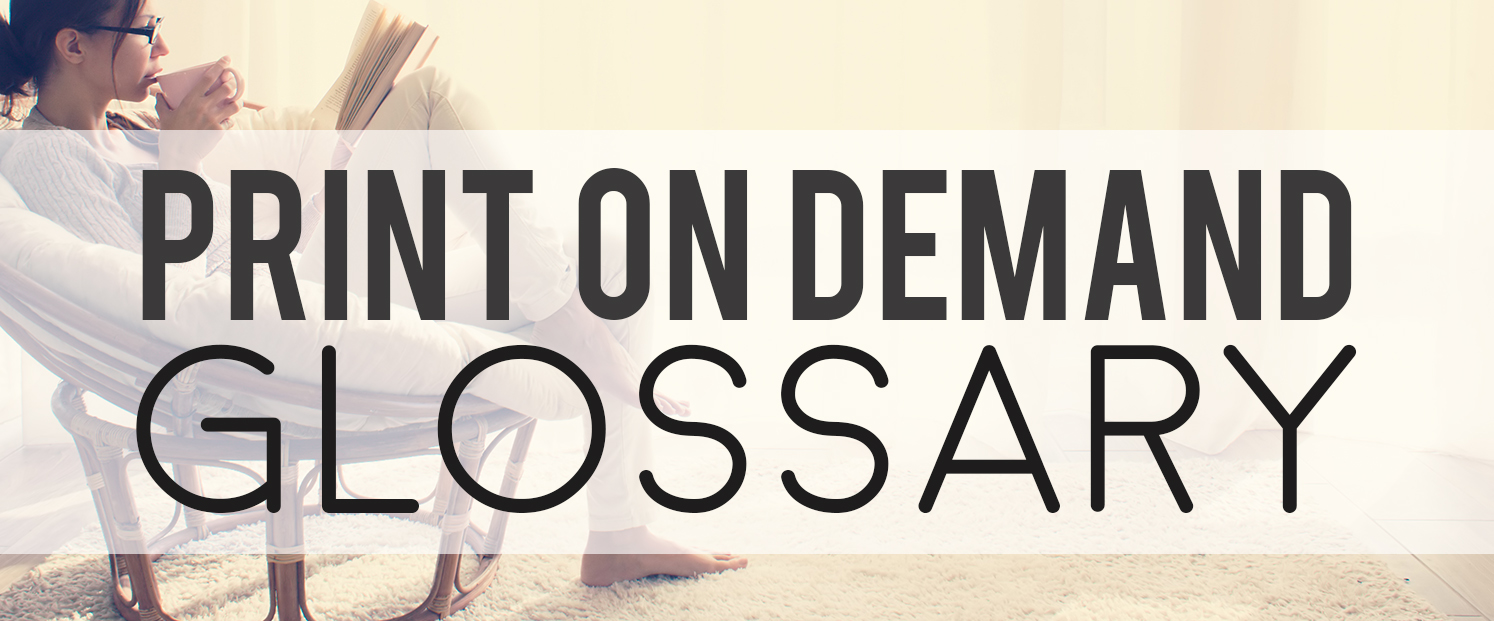
The print industry is full of jargon that most people aren’t familiar with. We know it can be hard to navigate through some aspects of fulfillment when aren’t even sure what the terminology is referring to. We try to make things as clear and simple as possible, but it's still easy to get confused sometimes. We decided to create this handy print on demand glossary in case you still feel a little lost.
Print On Demand Glossary
POD
POD or “Print On Demand” simply means we only print your products when you need them. This is different from other services because we only print out the items you sell. There are no minimums and no need to keep a large stock of inventory. This eliminates any waste or excess product which translates to less overhead.
DTG
DTG or “Direct To Garment” refers to the printing process we use here at Printaura. We have special printers that are able to print designs and images directly onto fabric. We print digitally as opposed to using screens. DTG printing allows us to offer no minimum orders!
Screen Printing / Silkscreening
Screen printing is a printing process that goes back thousands of years. The process involves transferring a design onto a screen and using a squeegee to push ink through the stenciled mesh. People still use this technique today. It is a great technique but usually requires large minimum orders due to the setup process.
Heat Press
Heat pressing is another printing technique. We use this for our custom branded neck labels. A heat press works by using heat and pressure to imprint a design onto fabric or an object. The design is printed using a special kind of ink (sublimation ink) on special paper (sublimation paper) that allows the design to be transferred.
Embroidery
Embroidery is a decorative technique used to create designs on fabric. This technique involves the weaving of thread to create shapes and words. Embroidery looks elegant and is distinguishably different than digital and screen printing. We use this technique for our hats and beanies.
Blank
A “blank” refers to a t-shirt or product that has not been printed on.
White Label
We are a white label company. “White Label” just means we print and ship products for other brands and businesses. We don’t use any branding on the products we print or on any of the shipping information. Basically, we print and ship your products to your customers, but you won't see Printaura or any of our branding anywhere. We do this so YOUR BRAND can be the star. It will appear as though you have created and shipped out the product, not us.
Underbase
Underbase refers a layer of white ink printed underneath a design. Underbase allows for colors to remain true, even when printed on darker items. Colors can change when printed on top of a base that is not white. Think about it like using a blue marker to draw on a red piece of paper. The blue marker won’t look blue over the red paper. It will look closer to brown. Underbase is just giving your design a white base to be printed on. However, contrast is still an issue that needs to be carefully considered when choosing shirt colors. For example if you print a dark purple design on a black shirt, even if the dark purple is a true dark purple, it will be hard to see since both colors are so similar.
No Underbase
You can elect to have no underbase printed on your shirts. This means your design will be printed on the shirt without a white base. This can be used to create a distressed look on lighter shirts, like greys and creams. It will allow some of the shirt color to show through the design colors. This technique is not recommended for darker colored shirts.
CMYK
CMYK is a type of color profile used for digital designs. CMYK refers to the four colors used to process the colors in a digital image - cyan, magenta, yellow, key (black). The CMYK color profile is the preferred profile printing since most printers use those colored inks to print with. It allows for a more true color since your computer and the printer are using the same combination of colors to create your desired colors.
RGB
RGB is another type of color profile used for digital designs. RGB refers to the three colors used to process the colors in a digital image - red, green, blue. The RGB color profile is the preferred color profile for digital imagery used on the web.
DPI
DPI or “dots per inch” refers to how many pixels make up a square inch of your design. “Dots” are the same thing as “pixels”. 72 DPI means there are 72 pixels making up a square inch of your print. 300 DPI means that same square inch is filled with 300 pixels. The higher the DPI the higher quality your print will be. Lower DPI images can make prints look very pixelated. Fewer pixels = bigger pixels. The pixels need to be larger to cover larger amounts of space, which makes them more visible, which creates a lower quality appearance.
72 DPI
- Low Quality
- Less Pixels
- Bigger Pixels
- Looks Pixelated
300 DPI
- High Quality
- More Pixels
- Smaller Pixels
- Looks Smooth
Anything Else?
Are there any other words you’ve come across that you don’t quite understand? Let us know in the comments below and we will add it to our list!
